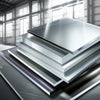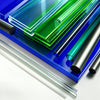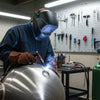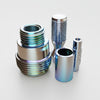Carbon Steel vs Stainless Steel: Pick The Right Grade Fast
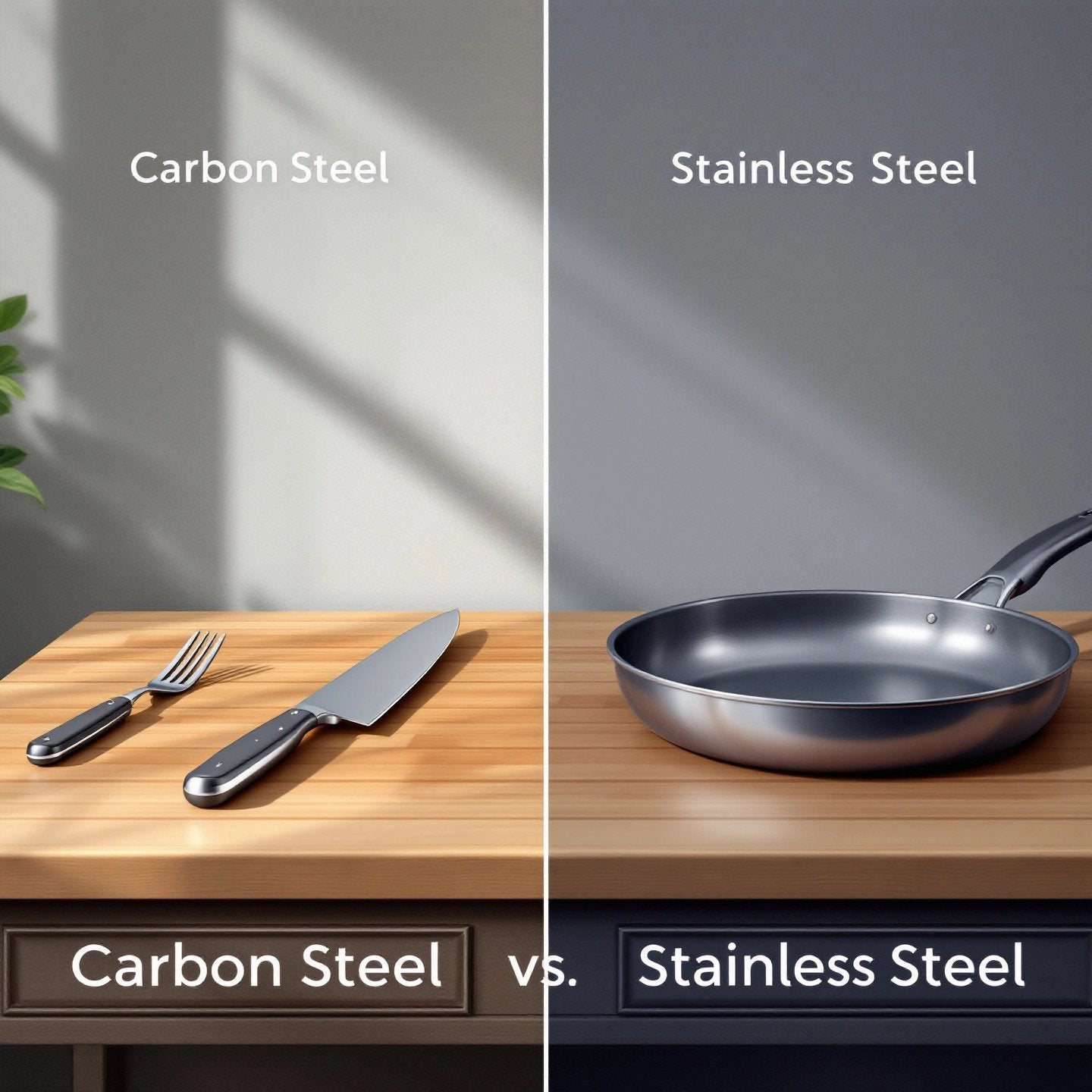
Choose the Right Steel with Confidence
Standing in the hardware aisle or reviewing a CAD drawing, you might wonder: carbon steel vs stainless steel—what’s really best for my project? Whether you’re deciding on a kitchen knife, a prototype bracket, or outdoor hardware, the choice isn’t as simple as it first appears. Many guides focus on technical specs, but miss the reality: your application, environment, and willingness to maintain the material matter just as much as the numbers.
Why Most Carbon Steel vs Stainless Steel Guides Miss the Point
Sounds complex? It doesn’t have to be. Most resources compare the difference between carbon steel and stainless steel by listing properties, but few connect those differences to everyday decisions. For example, will carbon steel rust if left damp after washing? Yes. But with proper care, it can outperform stainless in edge retention or toughness. On the flip side, do you know what makes stainless steel stainless in real use? It’s the chromium content—usually at least 10.5%—that forms a passive, invisible layer, protecting the steel from corrosion even in humid or wet environments.
- Corrosion Risk: Is your part exposed to water, salt, or food acids? Stainless is usually safer.
- Strength & Toughness: Need a blade that holds an edge (like a chef’s knife) or a shaft that resists bending? High-carbon steels excel here.
- Machinability: Prototyping or mass production? Mild carbon steel is easier and cheaper to machine.
- Heat Treatment: Custom hardness or wear resistance? Carbon steels can be quenched and tempered.
- Hygiene: Food equipment or medical parts? Stainless’s cleanability wins.
- Cost & Lead Time: Budget-sensitive or need it fast? Carbon steel is often more available and affordable.
Let’s look at some real-world trade-offs:
- Food Equipment: Stainless for easy cleaning, but seasoned carbon steel pans develop a natural nonstick surface.
- Marine/Outdoor: Stainless resists salt and rain; carbon steel will rust unless coated or maintained.
- Construction/Tools: Carbon steel for strength and cost; stainless for longevity in exposed conditions.
- Prototyping/Machine Parts: Mild carbon steel for easy machining; stainless if corrosion is a concern.
Environment and maintenance discipline decide more than raw strength.
What Makes Stainless Steel Stainless in Real Use?
You’ll notice that stainless steel’s “stainless” quality isn’t just about the metal—it’s about how it’s used and cared for. If the protective chromium oxide layer is damaged (by scratches or certain chemicals), even stainless can stain or corrode. That’s why food service and medical industries favor stainless: it’s easy to keep clean and resistant to most common threats. But remember, not all stainless grades are equal—some excel in saltwater, others in acid resistance.
When Carbon Steel Wins Despite Rust Risk
Imagine you need a blade that stays sharp after heavy use, or a part that takes repeated impact. Here, high-carbon steel’s hardness and edge retention shine. Yes, will carbon steel rust? Absolutely—if left wet or unprotected. But with simple care routines like oiling, drying, and proper storage, you can unlock its full performance potential. Many chefs and machinists still choose carbon steel for these reasons.
This guide doesn’t just compare carbon vs stainless steel in theory. Each section breaks down a specific grade or service, with clear pros, cons, and use cases in easy-to-scan lists. You’ll also get:
- Actionable maintenance workflows (seasoning, oiling, storage tips)
- Weldability and heat-treatment notes for each grade
- Grade-by-grade recommendations for common scenarios
Near the end, you’ll find a side-by-side comparison table and a concise recommendation matrix—so you can pick the right steel (and finish) for your kitchen, marine, structural, or prototyping needs.
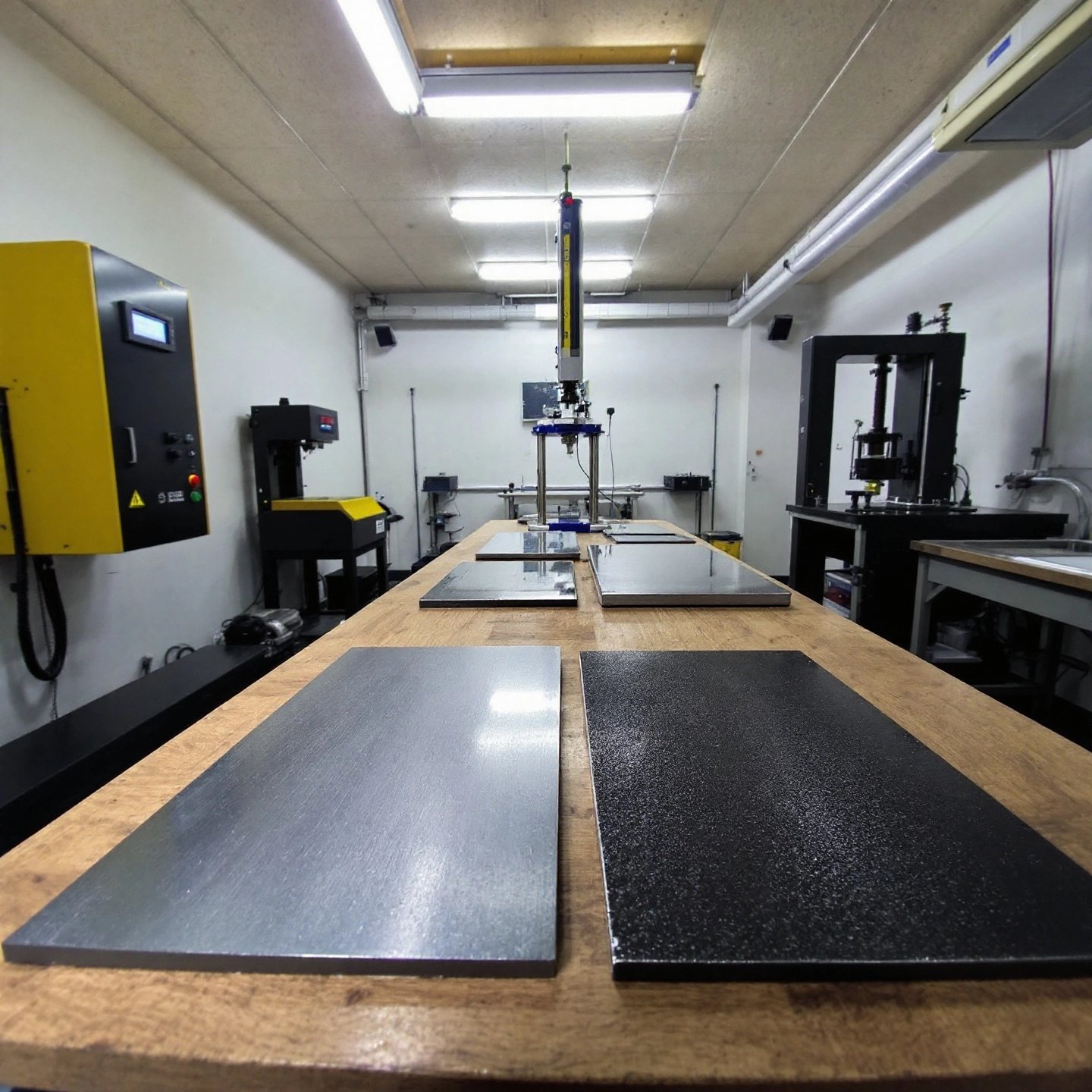
How We Evaluate and Rank Carbon and Stainless Steels
When you’re weighing the difference between carbon steel and stainless steel, it’s not just about picking the hardest or shiniest metal. How do you know which grade truly fits your needs? To keep this guide practical and trustworthy, we use a structured, transparent approach—grounded in industry standards, real datasheets, and the realities of fabrication and use.
Test Protocols for Corrosion, Wear, and Edge Retention
Imagine you’re designing a food processing part or a marine bracket. Will it hold up to kitchen acids or salty air? To answer, we look at how each steel grade performs in controlled tests:
- Composition and Microstructure: The composition of steel and stainless steel drives everything. We compare carbon percentage (for strength and hardenability), chromium/nickel/molybdenum (for corrosion resistance), and microstructure (ferrite, austenite, martensite). For example, adding more carbon in steel typically boosts hardness and strength, but can reduce ductility and make welding trickier.
- Formability, Weldability, and Machinability: We check how easily each grade can be formed, welded, and machined. For instance, mild carbon steel is easy to bend and weld, while high-chromium stainless (like 316) may require special fillers and careful technique—especially when welding of carbon steel to stainless steel is needed. Mixing materials? Always consider sensitization risk in stainless and select fillers to match the service environment.
- Corrosion Behavior by Environment: We assess corrosion risk based on real-world settings: food acids, salt/chlorides, humidity, or industrial chemicals. Stainless steel corrosion resistance depends on grade—304 resists most kitchen threats, while 316 (with added molybdenum) stands up to saltwater and aggressive chlorides. Carbon steel, unless protected, will rust quickly in these environments.
- Maintenance Burden: We factor in the care each material demands. Some grades need frequent oiling, seasoning, or passivation. Others are nearly maintenance-free. If you can’t commit to regular upkeep, stainless may save you headaches.
- Mapping Grades to Applications: We align each steel with its ideal use: 18 8 stainless steel vs 304 stainless steel for kitchenware, or high-carbon martensitic grades for knives and springs. This mapping ensures you’re not just picking a material—you’re picking the right tool for the job.
Datasheets and Standards: Our Core Reference Points
All mechanical property values—like tensile strength, yield strength, elongation, and hardness—are pulled directly from manufacturer datasheets and recognized standards (AISI, ASTM, EN, UNS). For example, here’s how a few common grades compare:
| Grade | Type | Tensile Strength (MPa) | Yield Strength (MPa) | Elongation (%) | Hardness (HB) |
|---|---|---|---|---|---|
| 304 Stainless | Austenitic | 515 (min) | 205 (min) | 40 (min) | 201 (max) |
| 316 Stainless | Austenitic | 515 (min) | 205 (min) | 40 (min) | 217 (max) |
| 1045 Carbon Steel | Medium Carbon | Varies by heat treat | Varies by heat treat | Varies | Varies |
How Processing Changes Properties
Heat treatment, cold working, and surface finishing can dramatically alter steel properties. For example, annealing softens the steel (increasing ductility), while quenching and tempering boost hardness and strength but may reduce toughness[ScienceDirect]. The right process depends on your application: do you need a tough, springy part or a hard, wear-resistant edge?
And when it comes to fabrication, always keep these caveats in mind:
- Welding carbon to stainless? Use proper fillers and control heat to avoid cracking and unwanted phases.
- Remember that some stainless grades can become sensitized (prone to intergranular corrosion) if overheated during welding.
- Surface finish and passivation matter—especially for food or medical parts where cres material (corrosion-resistant engineering steel) is required.
Practical Ranking: Factoring in Cost, Lead Time, and Availability
Finally, we recognize that the “best” steel on paper may not always be the best for your timeline or budget. Sometimes, a slightly lower grade that’s in stock or faster to machine will serve you better than a premium alloy with a long lead time. We update recommendations to reflect cost and availability shifts—so you get advice that’s as real-world as your project demands.
Next, we’ll show how these principles play out in real machining and fabrication scenarios—so you can confidently choose the right steel, whether you’re after maximum edge retention, best stainless steel corrosion resistance, or a balanced compromise for prototyping.
XTJ's CNC Machined Carbon and Stainless Parts for Any Project
Ever needed a prototype in days, or worried about matching finishes when switching between carbon steel and stainless steel? Imagine a workflow where you can move from concept to finished part—no matter the material—with confidence in every dimension. That’s what XTJ’s CNC machining services bring to the table, making the carbon steel vs stainless steel decision more about application fit than manufacturing headaches.
Best for Rapid Prototypes and Production Runs
When you’re balancing the benefits of carbon steel material for rugged strength against the corrosion resistance of stainless, a flexible CNC service is essential. XTJ’s advanced 4- and 5-axis machining centers support both materials in the same workflow, so you can test, iterate, or scale production without compromise. Whether you’re making general purpose stainless steel shafts, custom housings, or food-contact components, you’ll get parts machined to ultra-tight tolerances—down to +/- 0.005mm—often in just a few days.
Tolerances, Finishes, and Materials—All in One Place
Still comparing stainless steel vs steel for your next build? Here’s how XTJ helps bridge the gap:
| Feature | Benefit for Carbon Steel | Benefit for Stainless Steel |
|---|---|---|
| Material Support | Wide selection of carbon steel material grades for mechanical parts, brackets, and wear components | Full range of stainless grades for corrosion-critical and hygiene-sensitive parts |
| Tolerances | Consistent fits for shafts, keys, and precision fixtures | Meets demanding specs for medical or food equipment |
| Finishes | Protective oiling, black oxide, or custom coatings on request | Passivation, electropolishing, or brushed finishes for enhanced resistance and appearance |
| Lead Time | Parts delivered as fast as 3 days for urgent builds | |
| Engineering Support | Guidance on grade selection, heat treatment, and welding carbon to stainless steel if needed | |
Pros
- Supports both carbon steel and stainless steel in one seamless workflow
- 4- and 5-axis CNC capability for complex geometries
- Tight tolerances suitable for high-precision parts
- Short lead times for rapid prototyping or urgent production
- Dedicated engineering support for material, finish, and process selection
Cons
- Service pricing varies depending on geometry, tolerance, and finish
- Datasheet selection and application-specific specs still required for best results
Maintenance and Care Guidance Included
Getting the right part is only half the story—keeping it performing is the other. Here’s how to maximize longevity and minimize headaches, no matter which material you choose:
- For carbon steel material: After machining, apply a light protective oil to prevent rust, especially on surfaces that will be handled or exposed. For outdoor or damp environments, consider specifying a black oxide or painted finish.
- For stainless steel: Request passivation or electropolishing for parts exposed to food, chemicals, or marine environments. Clean with neutral detergents and avoid cross-contamination during stainless to carbon steel welding or assembly.
- For both: If surface finish matters (like for sliding fits or aesthetic parts), specify your required Ra (surface roughness) and request edge deburring. This ensures parts arrive ready for use or assembly.
Need to tackle a mixed-material assembly, or unsure which finish is best? You can get a quote and expert advice from XTJ—whether you’re prototyping a single shaft or scaling up to hundreds of housings. Their workflow makes it easy to compare stainless steel vs steel options side by side, so you can focus on performance, not process headaches.
Next, we’ll look at how specific carbon and stainless grades perform in the real world—starting with the most formable mild steels for brackets and fixtures.
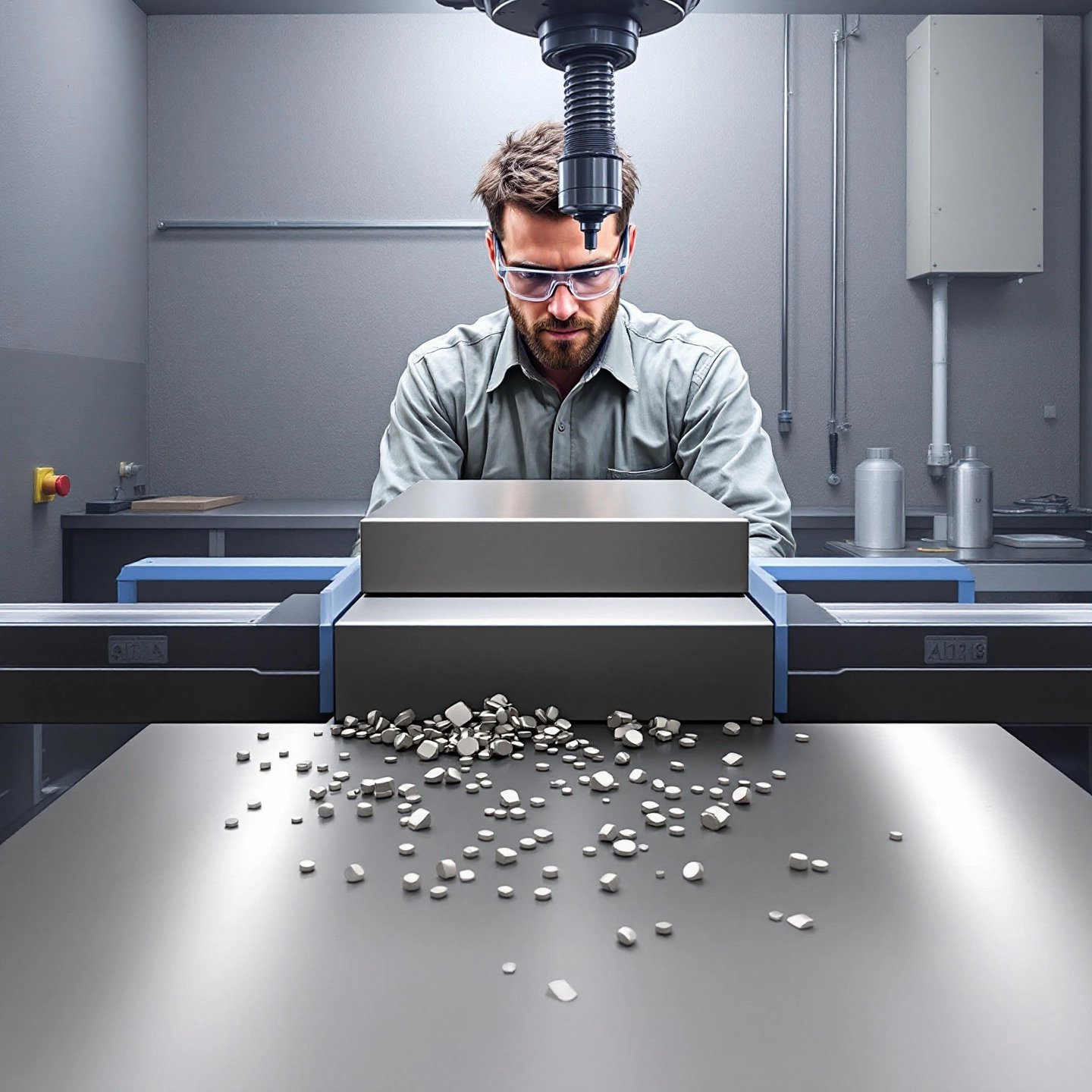
AISI 1018 Low Carbon Steel
Why Choose 1018 for Forming and Welding?
Ever needed to bend, cut, or weld steel for a bracket or machine part—and wanted the process to be as smooth as possible? That’s where AISI 1018, a classic low carbon steel, shines. If you’ve ever wondered about the practical differences in the mild steel vs carbon steel debate, 1018 is the go-to for easy fabrication and reliable results. With a carbon content around 0.18%, it balances enough strength for general use with excellent ductility and weldability. This makes it ideal for jigs, spacers, fixtures, and prototyping—especially when cost and speed are more important than maximum strength.
Pros
- Excellent machinability—creates fine surface finishes and predictable chips for efficient production
- Highly weldable with standard filler metals (ER70S-6 recommended for best results)
- Consistent for cold forming and bending operations
- Predictable dimensional stability—reduces surprises in mass production
Cons
- Lower strength and wear resistance compared to higher-carbon steels (like 1045)
- Requires coatings or oils for corrosion protection—carbon steel will rust if left unprotected, especially in humid or outdoor environments
Machining Notes and Surface Finish Tips
1018’s free-machining nature means you’ll get smooth finishes and tight tolerances with minimal tool wear. It’s commonly supplied as cold-drawn bar, which further enhances surface quality and dimensional accuracy. For the best results:
- Use sharp, rigid tooling and moderate speeds to maintain surface integrity
- Clean and degrease surfaces before welding to avoid porosity or weak joints
- Control heat input during welding to prevent warping; for precision fits, ream holes or surfaces after welding
| Property | Typical Value (Cold Drawn 1018) |
|---|---|
| Tensile Strength | 440 MPa (min) |
| Yield Strength | 370 MPa (min) |
| Elongation | 15% (min) |
| Hardness (Brinell) | 126 (typical) |
Heat Treatment and Case Hardening Options
While 1018 isn’t meant for high-strength or wear-critical parts, you can improve its edge durability with case hardening. Thin sections can reach up to Rc 42 on the surface, while thicker parts may only achieve Rc 28–30. This makes it suitable for gears, pins, and wear strips that need a tough outer layer but a ductile core.
For fabrication:
- Hot work (forging) is typically performed in a range of 950–1250°C (1750–2280°F).
-
A full anneal for maximum softness is done at around 870–910°C (1600–1670°F), followed by slow cooling. Process annealing is done at around 650°C (1200°F) as needed.
- Cold working is possible, but intermediate annealing prevents work hardening.
Maintenance: Don’t Let Rust Sneak Up on You
It’s easy to overlook, but carbon steel will rust if you skip protective steps. Here’s how to keep your 1018 parts in top shape:
- After machining, apply a light oil or wax to exposed surfaces
- For outdoor or long-term storage, specify paint, plating, or black oxide coatings
- Store in dry, well-ventilated areas; use desiccants or dehumidifiers in humid climates
- Regularly inspect for early signs of rust, especially at welds or cut edges
For applications where edge or surface hardness matters, ask your fabricator about case hardening options. And remember: if you need more strength or wear resistance, the next section covers medium carbon steels like 1045—your step up when 1018’s easy workability isn’t enough.
AISI 1045 Medium Carbon
Strength and Toughness Balance for Rotating Parts
When you need a shaft or pin that can handle more than just light duty—think keyed drive shafts, couplers, or high-load pins—AISI 1045 medium carbon steel is a proven workhorse. Ever wondered why certain gears or axles last longer and resist deformation under stress? The answer often lies in the sweet spot of carbon content: 1045’s 0.43–0.50% carbon and 0.60–0.90% manganese blend delivers a strong balance of toughness, fatigue resistance, and wear performance. In the carbon steel vs stainless debate for power transmission, 1045 is the go-to for strength and reliability in rotating or impact-loaded parts.
Heat-Treatment Pathways and Tempering
Need even more durability? 1045 is highly adaptable through heat treatment. You can temper steel to dial in the perfect mix of hardness and toughness for your application. Here’s how the process works:
- Normalizing: Heat to ~870°C, air cool for uniform grain and stress relief. Results in improved machinability and consistent mechanical properties.
- Annealing: Heat to 750–800°C, then furnace cool for maximum ductility—ideal before heavy machining or forming.
- Quenching and Tempering: Heat to 820–850°C, quench (typically in oil for balance), then temper at 300–450°C for shafts or tools. This can yield up to 55 HRC surface hardness—great for wear parts.
- Surface Hardening (Flame/Induction): For gears or rollers needing a tough core and hard surface, apply localized hardening to reach Rc 54–60 while retaining ductility inside.
| Process | Temperature (°C) | Resulting Properties |
|---|---|---|
| Normalizing | 870 | Uniform grain, improved machinability |
| Annealing | 750–800 | Maximum ductility, easy machining |
| Quench & Temper | 820–850 (quench), 300–450 (temper) | Up to 55 HRC, high wear resistance |
| Flame/Induction Hardening | Varies (surface only) | Rc 54–60 surface, tough core |
By adjusting your tempering temperature, you can fine-tune hardness and toughness for different needs: lower temp for harder, wear-resistant tools; higher temp for more shock-absorbing, flexible parts.
Weldability and Forming Considerations
Here’s where the steel vs stainless and carbon steel vs steel comparisons get practical. 1045 offers better strength than low-carbon grades like 1018, but its higher carbon content means you need to pay attention when welding or forming:
- Weldability: Good in normalized/hot-rolled state. For best results, preheat to 150–300°C, use low-hydrogen electrodes, and consider post-weld tempering to relieve stress and prevent cracking.
- Machinability: Rated around 65% (vs. free-machining steels), so it’s workable but needs sharp tools and proper feeds.
- Forming: Hot working is preferred; cold forming possible but may require intermediate annealing to avoid cracking.
Pros
- Higher strength and fatigue resistance than low-carbon steels
- Can be heat treated or surface hardened for improved wear
- Widely available in round bar—ideal for shafts, pins, and couplers
- Versatile for automotive, construction, and heavy machinery parts
Cons
- Lower weldability than 1018; requires careful preheat and post-weld treatment
- Still susceptible to rust—needs oiling or protective coatings
- May require stress relief after heavy machining or welding
Maintenance and Protection
Unlike stainless, 1045 is not corrosion resistant. For indoor service, a light oil or phosphate/black oxide finish is usually enough. For outdoor or humid environments, specify paint or plating to prevent rust. Regular inspection and reapplication of protective coatings will maximize service life—especially if your application involves exposure to moisture or fluctuating temperatures.
In summary, AISI 1045 is the backbone of many industrial and mechanical systems—perfect when you need a step up from mild steel, but don’t want the complexity or cost of alloy steels. Next, we’ll look at high-carbon grades for blades and springs, where edge retention and hardness are top priorities.
AISI 1095 High Carbon
Edge Performance and Wear Resistance
Ever wondered why some blades slice effortlessly through food or rope and stay sharp for weeks, while others dull after a few uses? The answer often comes down to the steel’s carbon content and how it’s heat treated. AISI 1095 is a classic high-carbon steel, boasting around 0.95% carbon—making it a top pick for carbon steel knives, chisels, scrapers, and thin springs where edge retention is critical.
-
Pros:
- Achieves high hardness and a razor-fine edge—ideal for carbon steel knife blades and wear strips
- Excellent edge retention—outperforms many stainless steel knife blades in pure sharpness and longevity between sharpenings
- Simple composition for predictable heat treatment and reliable results
-
Cons:
- Lower corrosion resistance—will rust if not maintained
- More brittle at maximum hardness—can chip under heavy impact or misuse
- Requires disciplined maintenance routines (washing, drying, oiling)
Heat Treatment and Quench Media
Getting the best performance from 1095 isn’t just about the steel—it’s about the process. Proper heat treatment unlocks its true potential for knife carbon vs stainless steel debates. Here’s a typical workflow for blades and springs:
| Step | Temperature (°F) | Purpose |
|---|---|---|
| Normalize | Above critical (~1600) | Refine grain structure, relieve stress |
| Austenitize (Hardening) | 1475–1500 | Prepare for quenching |
| Quench | Oil (fast quench) | Lock in hardness |
| Temper | 350–450 | Adjust hardness/toughness balance |
After hardening, 1095 can reach Rockwell C 64–66, but this is often tempered down to Rc 57–61 for most carbon steel knives—balancing sharpness with usable toughness. Be sure to keep grinds cool during finishing to avoid temper loss.
Care and Rust Prevention Workflow
Unlike the best stainless steel for knives, 1095 demands a bit more attention. Will it rust? Yes—if left wet or dirty. But with a simple maintenance routine, your carbon knife will serve for years and develop a beautiful patina that tells its story:
- After each use, wash by hand with mild dish soap and rinse in hot water
- Dry thoroughly with a clean towel—never leave to air dry
- Apply a thin layer of food-safe mineral oil to the blade, especially for kitchen knives
- Store dry, ideally in a blade guard or knife block
- For patina development, use the knife regularly or season lightly with a thin oil and gentle heat—this natural oxide layer helps slow further rusting
- If orange rust appears, remove it promptly with a non-scratch sponge or baking soda paste
Sharpening is straightforward—use medium or fine grit stones and a leather strop, but avoid overheating the edge to preserve hardness. With these habits, a carbon steel knife rivals or even surpasses stainless steel knife blades in daily performance, especially for those who value edge sharpness and ease of resharpening.
"A carbon steel knife rewards care and discipline with unmatched sharpness and a blade that ages gracefully over time."
Still deciding between carbon steel vs stainless steel knife options? Remember: if you want the lowest maintenance and highest corrosion resistance, stainless steel knife blades are hard to beat. But for pure cutting performance, 1095 high carbon remains a favorite among chefs, woodworkers, and anyone who values a blade that bites back. Next, we’ll explore stainless grades like 304—where corrosion resistance and hygiene take center stage.

Stainless 304 Austenitic
Where 304 Stainless Excels
Ever wondered why commercial kitchens, breweries, and even your favorite cookware rely so heavily on 304 stainless steel? It’s simple: 304 is the workhorse of the stainless family, offering a unique blend of corrosion resistance, formability, and weldability. When comparing stainless steel vs carbon steel pan options, 304 stands out for its ability to handle food acids, cleaning chemicals, and daily wear with minimal fuss. It’s the classic “18/8” stainless—meaning about 18% chromium and 8% nickel—delivering a passive chromium oxide layer that keeps rust at bay.
-
Pros:
- Excellent corrosion resistance in indoor, food, and many chemical environments
- Good formability—easy to deep draw, bend, or roll into tanks, pans, and enclosures
- Widely weldable by TIG/MIG with standard fillers (308/308L recommended)
- Nonmagnetic in the annealed state—ideal for sensitive equipment
- Resists oxidation at high temperatures (up to 870°C intermittent)
-
Cons:
- Susceptible to pitting and crevice corrosion in chloride-rich (salty) environments
- Work-hardens rapidly—may require intermediate annealing during fabrication
- May need passivation or electropolishing for best corrosion performance after welding or heavy forming
Formability, Weldability, and Finishing
Imagine forming a deep-drawn sink or a seamless brewing tank. 304’s austenitic structure makes it the go-to grade for these demanding shapes, outpacing 303 stainless steel vs 304 when ductility is critical. It’s also the most common pick for carbon steel vs stainless steel pans in professional kitchens—stainless is easier to keep clean, won’t rust from acidic sauces, and doesn’t require seasoning like carbon steel. For fabrication:
- Use TIG or MIG welding with 308/308L filler for strong, corrosion-resistant joints
- Always pre-clean tools and surfaces to avoid cross-contamination with carbon steel (which can trigger rust spots)
- Request passivation after welding—this restores the protective chromium oxide layer, especially important for food-contact or pharmaceutical applications
- For best results in visible or hygiene-critical parts, specify electropolishing or a fine brushed finish
| Property | 304 Stainless (Bar/Section) |
|---|---|
| Tensile Strength (MPa) | 500–700 |
| Yield Strength (MPa) | 190 (min) |
| Elongation (%) | 45 (min) |
| Hardness (Brinell) | 215 (max) |
Cleaning and Passivation for Hygiene
In the kitchen or lab, hygiene is non-negotiable. 304’s smooth surface makes it easy to wash with neutral detergents—no seasoning required, unlike carbon steel pan vs stainless steel maintenance routines. For best corrosion resistance, especially after welding, passivation is key: this acid treatment strips away free iron and rebuilds the protective layer, so your stainless stays “stainless.”
- Wash regularly with mild soap and water; dry thoroughly to prevent water spots
- In high-chloride or aggressive cleaning environments, schedule periodic re-passivation
- Store cookware and fabricated parts in dry, temperature-controlled spaces to avoid discoloration or warping
When comparing carbon steel vs stainless steel wok or stainless steel wok vs carbon steel wok, remember: stainless is lower maintenance and more forgiving if you forget to dry your pan, but carbon steel can develop a seasoned nonstick surface with care. For most home cooks and food processors, 304 stainless is the all-around winner for hygiene, corrosion resistance, and ease of use.
"304 stainless steel is the default choice for cleanability and corrosion resistance in food, lab, and architectural settings—just add passivation for peak performance."
Next, we’ll dive into 316 stainless—the upgrade for marine and chemical environments where chlorides challenge even the best general-purpose grades.
Stainless 316 Marine Grade
Why 316 in Salt and Chemical Exposure?
Ever wondered why some hardware on boats, docks, or chemical plants stays shiny and strong, while others pit and fail within a year? The secret lies in the choice of alloy. 316 stainless steel is the go-to grade for marine, coastal, and aggressive chemical environments because it offers superior corrosion resistance—especially where salt, chlorides, or harsh chemicals are present. While you might compare 18 8 stainless steel vs 316 stainless steel, the key difference is the addition of 2–3% molybdenum in 316. This element dramatically increases resistance to pitting and crevice corrosion, making 316 a reliable choice for saltwater and chemical processing applications.
Pros
- Outstanding corrosion resistance in chloride-rich (salty) and chemical environments
- Excellent durability—stands up to weather, acids, and aggressive industrial settings
- Good weldability, especially in low-carbon 316L variant (preferred for welded assemblies)
- Self-healing passive layer for long-term protection
- Easy to clean and maintain—hygienic for food and pharma
Cons
- Higher cost than 304 or 18/8 stainless grades
- Can suffer from galling (thread seizing) without proper fastener practices
- Not completely immune to crevice corrosion or stress corrosion cracking, especially at high temperatures
Fabrication Tips and Passivation
When fabricating with 316, a few best practices will maximize its legendary corrosion resistance. Always select compatible fillers—308L or 316L—for welding, and avoid cross-contamination from carbon steel, which can introduce rust spots. After welding or machining, specify passivation or electropolishing. These treatments remove free iron and restore the protective chromium oxide layer, ensuring the surface remains "stainless." Proper pre-cleaning is crucial—grease, oil, or iron debris can compromise the passive layer and reduce performance.
- Use only stainless tools or thoroughly clean equipment before contact
- Request acid passivation after fabrication, especially for food, marine, or pharmaceutical parts
- For visible or hygiene-critical components, consider electropolishing for a smoother, more corrosion-resistant finish
Lifecycle and Maintenance in Real Use
Is stainless steel waterproof? While no metal is truly “waterproof,” 316 stainless comes close—its molybdenum-enhanced passive layer provides robust protection against water, salt spray, and most chemicals. However, even this alloy needs basic care to deliver a long service life:
- Rinse with fresh water after saltwater exposure to remove deposits and maintain the passive layer
- Periodically clean with mild detergents; avoid harsh acids or abrasives
- Inspect crevices, joints, and welds regularly—design to minimize water traps where corrosion can start
- For pharmaceutical or food-service settings, schedule routine passivation as part of preventive maintenance
In marine environments, 316 stainless hardware routinely outlasts galvanized or even 304 stainless, making it the best investment for docks, boat fittings, and coastal structures. It’s also a favorite in the pharmaceutical and chemical industries, where hygiene and chemical resistance are non-negotiable.
| Property | 304 Stainless | 316 Stainless |
|---|---|---|
| Chromium (%) | 18–20 | 16–18 |
| Nickel (%) | 8–10.5 | 10–14 |
| Molybdenum (%) | – | 2–3 |
| Corrosion Resistance (Saltwater) | Moderate (may pit) | Excellent (resists pitting/crevice corrosion) |
| Typical Applications | Cookware, tanks, indoor hardware | Marine fittings, chemical/pharma, food exposed to salt |
Stainless vs Surgical Steel: What’s the Difference?
People often ask about stainless vs surgical steel. It's important to know that "surgical steel" is a commercial term, not a precise technical specification. It refers to a group of stainless steels with high corrosion resistance and good biocompatibility.
The most common grade used for medical implants (like screws and plates) and high-quality instruments is 316L, due to its excellent resistance to corrosion from body fluids. For cutting instruments like scalpels and surgical scissors, martensitic stainless steels such as Type 440C or 420 are often used. These grades can be heat-treated to a very high hardness, allowing them to hold an extremely sharp edge.
So, while many surgical tools are made from 316-family stainless steels, the best grade depends entirely on the application: 316L for corrosion resistance and biocompatibility, and 400-series for hardness and edge retention.
Is Stainless Steel Rust Proof?
So, is stainless steel rust proof? 316 stainless is as close as it gets, especially in marine and chemical environments. While stainless steel does it rust under extreme conditions or neglect, its self-healing passive layer gives you the best shot at decades of trouble-free service. For the toughest salt, chemical, or hygiene challenges, 316 remains the gold standard.
Next, we’ll bring all the grades together in a side-by-side comparison—so you can quickly match the right steel to your specific application, budget, and care routine.
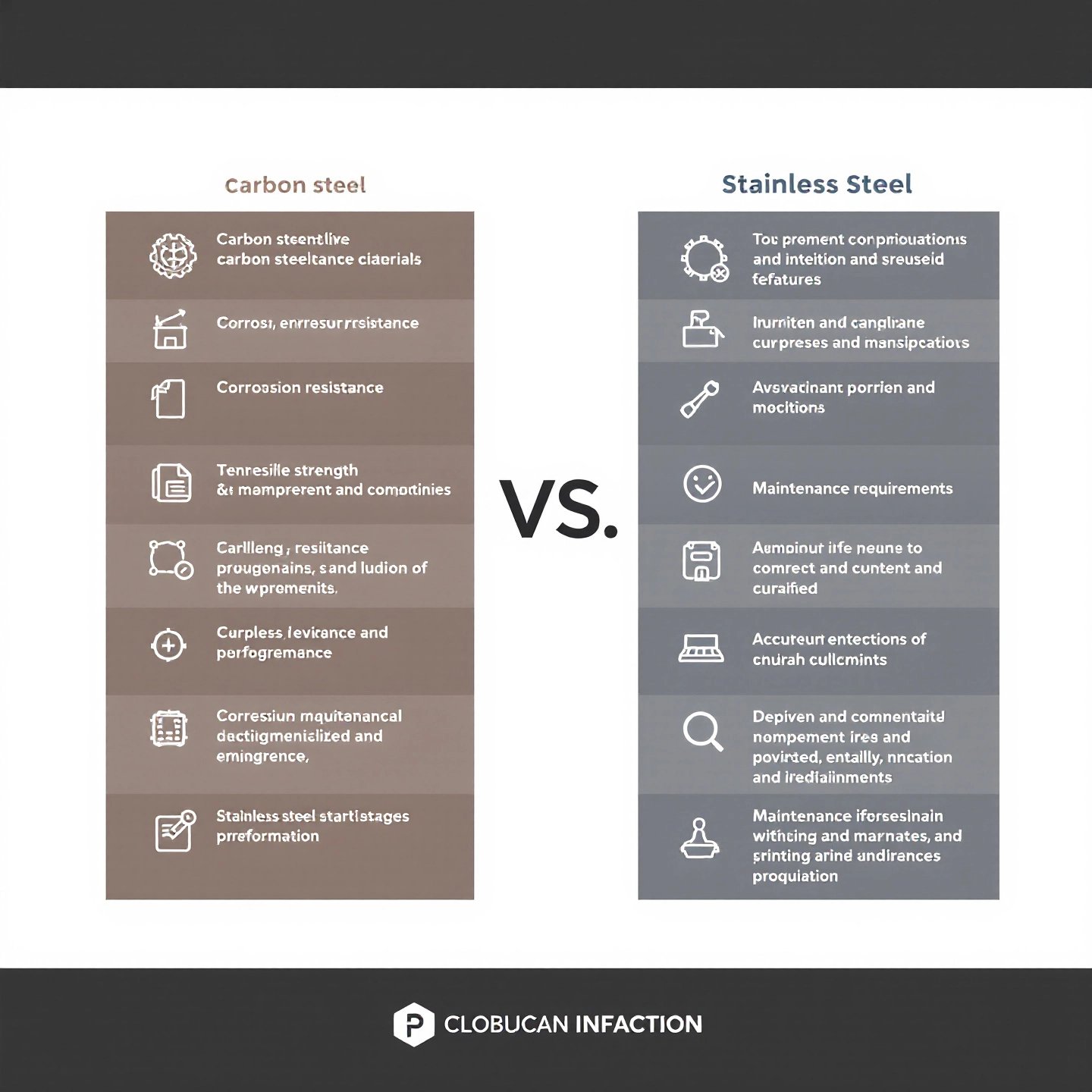
Side by Side Comparison and Selection Matrix for Carbon Steel vs Stainless Steel
Trying to decide between carbon steel versus stainless steel for your next project? Or maybe you’re weighing the difference between steel and stainless steel for a new kitchen pan, a marine bracket, or a prototype part? This section brings all the key grades together—so you can compare their strengths, weaknesses, and care needs at a glance.
Side-by-Side Comparison by Environment and Use
| Option / Grade | Corrosion Resistance | Strength / Hardness | Machinability | Weldability | Heat-Treat Potential | Suggested Finish / Care | Best Use Cases | Care Burden |
|---|---|---|---|---|---|---|---|---|
| XTJ CNC Machining Services (Custom CNC, all grades) | Depends on selected grade (carbon vs stainless) |
Customizable (from mild to high-carbon or alloy) |
Excellent (tight tolerances, any geometry) |
Excellent (engineering support for carbon to stainless welding) |
Grade-specific (can specify annealed, tempered, or hardened) |
Protective oil (carbon), passivation (stainless), custom per RFQ |
Prototypes, mixed-material builds, precision fixtures, rapid validation |
Low to moderate (care guidance included) |
| 1018 Low Carbon Steel | Poor (will rust if not protected) |
Moderate (good for mild brackets, fixtures) |
Excellent | Excellent | Limited (case hardening only) |
Oil, paint, or black oxide for outdoor use |
Jigs, spacers, mild machine work | Moderate (needs oiling or coating) |
| 1045 Medium Carbon Steel | Poor (will rust; not for marine use) |
High (can be quenched/tempered) |
Good | Good (requires preheat, stress relief) |
Excellent (surface & full hardening) |
Oil, phosphate, or paint | Shafts, pins, wear parts | Moderate (inspect, re-oil, coat as needed) |
| 1095 High Carbon Steel | Poor (rusts quickly if not oiled) |
Very High (best for blades, springs) |
Fair (harder to machine when hardened) |
Fair (can crack if not careful) |
Excellent (high edge hardness possible) |
Frequent oiling, patina or seasoning for blades |
Knives, springs, scrapers | High (must dry and oil after use) |
| 304 Stainless Steel | Excellent (indoors, food, many chemicals) |
Moderate (less hard than high-carbon) |
Good (work-hardens) |
Excellent (easy to TIG/MIG) |
None (not hardenable by heat) |
Passivation, electropolish for hygiene |
Cookware, tanks, food equipment, general hardware |
Low (wash, dry, occasional passivation) |
| 316 Stainless Steel | Outstanding (marine, chemical, salt exposure) |
Moderate (similar to 304) |
Good | Excellent (best with 316L for welding) |
None | Passivation, rinse after salt exposure |
Marine hardware, pharma, chemical, food with salt |
Very low (rinse, routine cleaning) |
Processing and Maintenance Implications
Notice how the right pick depends on more than just raw numbers. For example, in the alloy steel vs stainless steel debate, alloy steels (like 1045 or 1095) deliver higher hardness and strength but require much more discipline in maintenance. Stainless grades (304, 316) win where corrosion and hygiene matter—think stainless steel vs carbon steel pans in a busy kitchen, or marine bolts on a dock.
- Carbon grades: Need oil or coatings, especially outdoors. Skip the maintenance, and you’ll see rust fast.
- Stainless grades: Much lower care burden, but still benefit from passivation and periodic cleaning, especially after welding or in salty/chemical environments.
- Mixed assemblies: When you need both (say, a carbon shaft with stainless fittings), specify careful carbon to stainless welding and protect against galvanic corrosion.
For most users, the corrosion environment and your willingness to follow a simple maintenance routine matter more than the steel’s maximum strength.
Quick Decision Framework
- Prototyping or mixed-material builds? Use a flexible CNC service (like XTJ) to quickly validate both carbon and stainless options—specify grade, finish, and get expert guidance on heat treatment or passivation.
- Low-cost, easy fabrication? 1018 mild steel is unbeatable for brackets and fixtures—just remember to protect it.
- High-wear, high-strength? 1045 or 1095 carbon steels are your answer, but only if you can commit to oiling and inspection.
- Food, lab, or marine environments? 304 for most kitchens, 316 for salt or chemical exposure—minimal care, maximum longevity.
- Still stuck? The difference between steel and stainless steel often comes down to where it’s used and how it’s cared for—not just what is carbon steel vs stainless steel in theory.
Next, we’ll wrap up with a concise, scenario-based recommendation matrix—so you can confidently match the right steel to your application and maintenance habits.
Final Recommendations and Care-First Decisions
Pick by Environment and Maintenance Tolerance
Still deciding: is carbon steel better than stainless steel for your project—or is stainless steel stronger than steel in real use? The answer depends on where, how, and how often you’ll use and maintain your part. To help you choose with confidence, here’s a scenario-based checklist that distills everything from this guide into quick, actionable picks:
| Scenario | Best Grade or Service | Why It Wins | Care Workflow |
|---|---|---|---|
| Fast prototypes or mixed-material builds | XTJ CNC Machining | Quickly validate carbon and stainless options in one workflow; specify grade, finish, passivation, or oiling as needed | Follow supplied care guidance; specify finish in RFQ |
| Kitchenware, food-contact pans/woks | 304 Stainless Steel | Hygienic, easy to clean, resists most food acids; minimal care | Wash with mild detergent, dry thoroughly, passivate periodically |
| Frequent salt/acid (food or lab) | 316 Stainless Steel | Best for harsh environments—marine, lab, or salty foods | Rinse after exposure, schedule passivation, avoid chloride stagnation |
| Marine/outdoor hardware | 316 Stainless Steel | Outstanding chloride resistance, low maintenance | Rinse after salt exposure, routine cleaning, inspect crevices |
| High-wear tools/knives | 1095 High Carbon Steel | Superior edge retention; is carbon steel harder than stainless? For blades, yes | Wash/dry after use, apply food-safe oil, store dry, re-season as needed |
| Shafts, pins, wear parts | 1045 Medium Carbon Steel | Balance of strength and toughness, heat-treatable | Oil after machining, coat for outdoor use, inspect seasonally |
| Formable brackets, fixtures | 1018 Low Carbon Steel | Easy to machine and weld; cost-effective | Apply oil or paint, store dry, check for rust |
Care Workflows for Carbon and Stainless
- Carbon steel: Always wash and dry thoroughly after use. For cookware, a thin layer of oil or fat seasoning makes the surface nearly is carbon steel non stick—re-season after abrasive cleaning or if food starts to stick. For hardware, apply a light oil or wax, and inspect for rust regularly, especially in humid or outdoor settings.
- Stainless steel: Wash with neutral detergent, dry completely, and passivate after welding or heavy use in aggressive environments. Avoid chloride-rich stagnation, and periodically inspect for signs of discoloration or rust. If contamination from carbon steel occurs, clean and re-passivate promptly.
Procurement Tips for Reliable Results
- Confirm the standards grade (AISI/ASTM/EN/UNS) for your application
- Specify heat treatment or tempering if strength or hardness is critical
- Request the right surface finish—passivation for stainless, protective oil or coating for carbon steel
- For mixed assemblies, clarify any welding or joining requirements (and consider expert support)
- Use a trusted CNC machining service to validate material choices and finishing—especially for prototypes or complex assemblies. XTJ offers tight tolerances, fast lead times, and engineering guidance—but always prioritize the fit for your scenario and care routine
"Choosing between carbon steel and stainless steel isn’t just about specs—it’s about matching the material to your environment, your maintenance habits, and your tolerance for care. The right workflow makes even is carbon steel non stick pans easy to maintain, while the wrong pick can mean headaches down the road."
By focusing on your real-world environment and maintenance discipline, you’ll get the full benefit of your chosen steel—whether you want the sharpest knife, the cleanest pan, or the longest-lasting marine hardware. Ready to make your pick? Use this checklist, and you’ll never second-guess your choice again.
Frequently Asked Questions about Carbon Steel vs Stainless Steel
1. Do chefs prefer stainless steel or carbon steel?
Many chefs choose carbon steel for its superior edge retention and the natural nonstick surface that develops with seasoning. However, stainless steel is often favored for its resistance to rust, easy cleaning, and low maintenance, making it a practical choice in busy kitchens. The right pick depends on your cooking style and willingness to maintain your pans.
2. Which is better: carbon steel or stainless steel utensils?
Carbon steel utensils excel in responsiveness, lightweight feel, and can develop a nonstick patina, but they require thorough drying and oiling to prevent rust. Stainless steel utensils are more durable, resist corrosion, and need less maintenance, making them ideal for high-acid foods and daily use. Choose based on your care preferences and cooking needs.
3. Will carbon steel rust if left damp?
Yes, carbon steel will rust quickly if left damp or exposed to moisture. Regular oiling, thorough drying after washing, and proper storage are essential to prevent rust and maintain performance. For outdoor or high-humidity environments, additional coatings or finishes are recommended.
4. What makes stainless steel stainless in real use?
Stainless steel contains at least 10.5% chromium, which forms a passive, invisible oxide layer that protects against corrosion. This property makes stainless steel ideal for environments exposed to water, acids, or salt. Proper care, such as avoiding scratches and periodic passivation, helps maintain its resistance.
5. How do I choose between carbon steel and stainless steel for my project?
Consider your application, environment, and maintenance tolerance. Use stainless steel for corrosion-prone or hygiene-critical uses like kitchenware and marine parts. Opt for carbon steel if you need higher strength, edge retention, or easy machinability, and are prepared to follow care routines like oiling and seasoning. For prototypes or mixed assemblies, CNC machining services can help you test both options efficiently.

